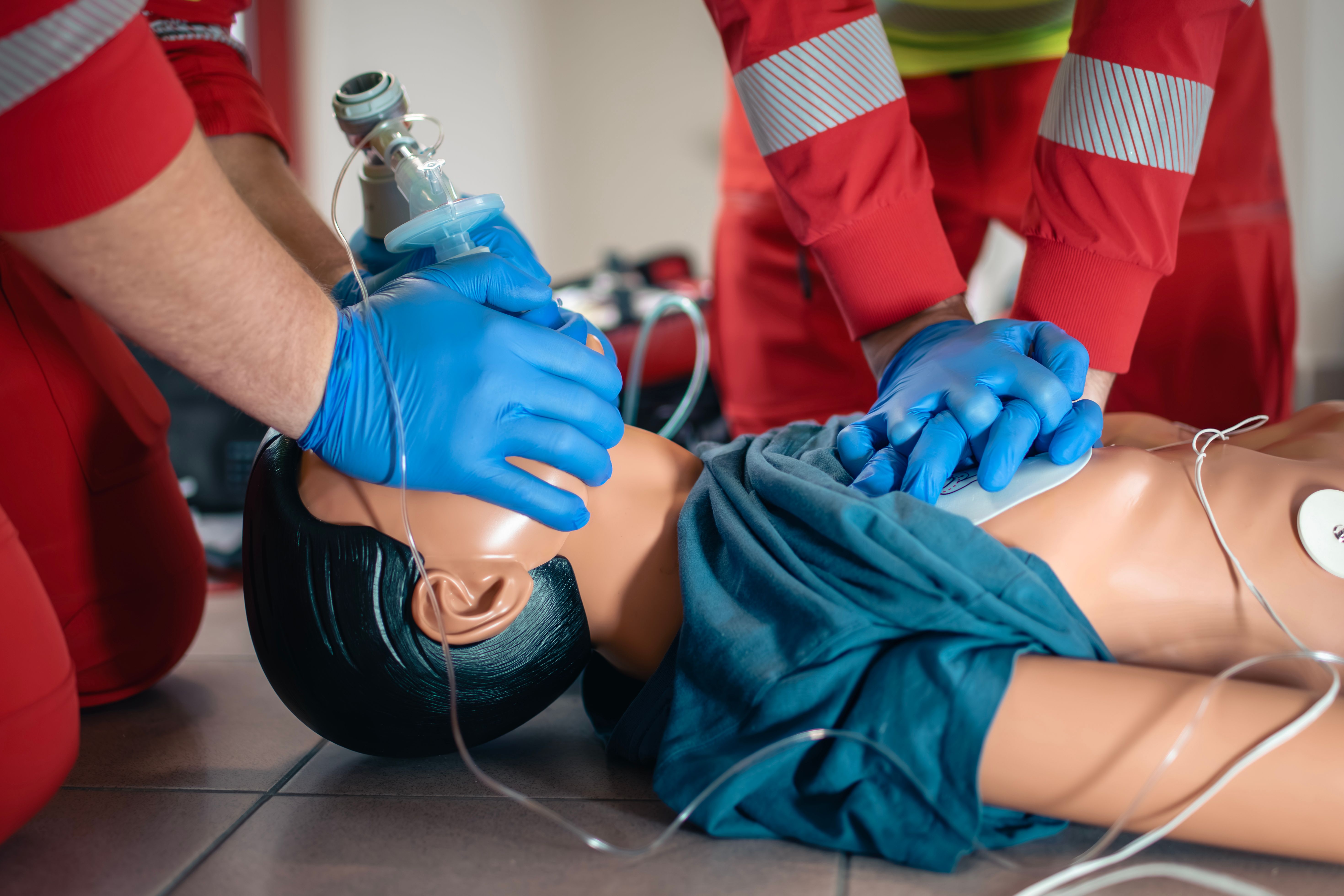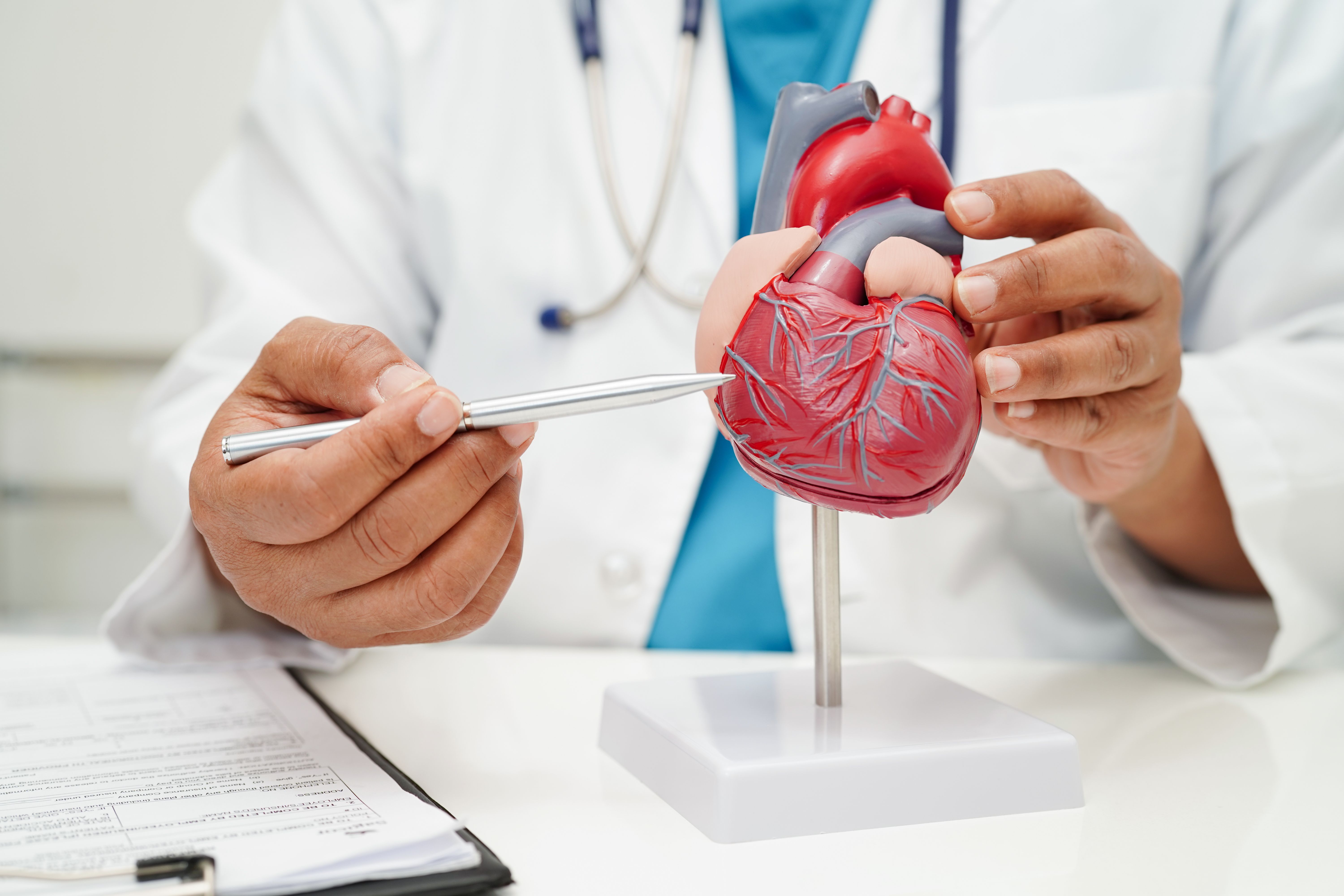NREMT Shock Review - The Four Major Types of Shock
BB
What is Shock?
Understanding the different types of shock is one of the most important parts of preparing for the NREMT exam. Nearly every trauma or medical emergency that leads to low blood pressure or poor perfusion falls into one of four main categories: hypovolemic, cardiogenic, obstructive, or distributive shock. By recognizing how each type develops and what makes them unique, NREMT students can identify the root cause of a patient’s poor perfusion more confidently in both testing and real-world scenarios.
Shock is defined as inadequate perfusion, meaning the body’s cells are not receiving the oxygen, water, and glucose they need to create ATP, or energy. When any of these ingredients are missing, the cells cannot function properly, causing shock. In most cases, the missing ingredient causing the shock is oxygen, except in certain emergencies such as hypovolemic or hypoglycemic conditions, low fluid or low blood glucose can also be the problem. To make sense of why a disease falls into one shock category or another, we will begin with the most straightforward forms and work toward the more complex ones.

Hypovolemic Shock
The first major type of shock is hypovolemic shock, which literally means “low fluid volume.” In this type of shock, there is not enough circulating fluid in the patient’s body to maintain perfusion. Hypovolemic shock can be divided into two subtypes: hemorrhagic and non-hemorrhagic. Hemorrhagic hypovolemic shock is caused by blood loss, either internally from gastrointestinal bleeding or organ lacerations, or externally from trauma. Non-hemorrhagic hypovolemic shock occurs when the body loses fluid in other non-bleeding ways, such as through vomiting, diarrhea, sweating, urination, or simple lack of fluid intake. Regardless of the cause, the result is the same—low circulating fluid volume that limits oxygen delivery to tissues.

Cardiogenic Shock
The next major category is cardiogenic shock, which occurs specifically when there is a problem with the cardiac muscle, the heart’s electrical system, or both. A classic example is a myocardial infarction, where a clot blocks oxygenated blood from reaching part of the heart muscle. That cardiac tissue begins to die, and the heart can no longer pump effectively, therefore causing shock. Congestive heart failure is another example; after years of high blood pressure or previous heart attacks, the heart muscle weakens, causing fluid to back up into the lungs (pulmonary edema) and decreasing cardiac output. Electrical problems can also lead to cardiogenic shock. If the heart beats too slow, blood pressure drops; if it beats too fast, the ventricles do not have time to fill between contractions, and blood pressure also drops. However, if the abnormal fast or slow rate is caused by something outside the heart, such as a compensatory response to another type of shock, it would not be classified as cardiogenic. It is important to remember that shock is only cardiogenic if it is being caused specifically by an issue with the heart's muscle or electrical activity.
Obstructive Shock
Obstructive shock develops when something physically blocks normal blood circulation. For example, cardiac tamponade. Most students would think this to be a form of cardiogenic shock since it says "cardiac" in the name and affects the heart muscle, but think carefully. Cardiac tamponade is when the pericardial sac becomes inflamed from infection or trauma and compresses the heart muscle, restricting its ability to fully expand and fill. Although the protective sack is affecting the heart muscle, the problem is not within the heart muscle itself but rather something outside that heart muscle obstructing it from functioning properly. Another example is tension pneumothorax or hemothorax, in which pressure builds up inside the chest cavity, compressing the lungs at first and then eventually the heart. Once again, the primary cause of the shock is not an issue with the heart muscle itself, but rather something outside that muscle obstructing it from functioning properly. A third cause is a pulmonary embolism, where a blood clot lodges in the pulmonary arteries and obstructs circulation through the lungs. A clot in the coronary arteries causes cardiogenic shock because it damages the heart muscle directly, while a clot in the pulmonary arteries causes obstructive shock because it blocks circulation causing shock rather than it being an issue with the heart's muscle.

Distributive Shock
The fourth major type is distributive shock, which is different from hypovolemic shock in that the body still contains normal fluid volume, but that fluid is no longer contained inside the blood vessels where it belongs. Distributive shock happens because of extreme vasodilation and increased permeability of the blood vessel walls, allowing fluid to leak into the surrounding tissues. Think about your blood vessels as being like a Chinese finger trap (pictured above), just on a microscopic scale. When it is pulled tight, the interwoven fibers become very tightly intertwined, and fluid flowing inside it would remained contained. When it widens though, the interwoven fibers separate and allow fluid to escape. That is what happens when blood vessels dilate excessively.
During anaphylactic shock, the immune system reacts to an allergen by releasing an overwhelming amount of histamine. Histamine causes blood vessels to dilate and become leaky, which leads to the fluid leaving the vessels and sitting in the tissue surrounding them, This is what causes the severe drop in blood pressure and swelling, including airway swelling. That is why your treatment for this is epinephrine, which acts as a vasoconstrictor to reverse the dilation and restore perfusion. In septic shock, a bacterial infection in the bloodstream damages the blood vessel walls and causes a similar dilation and leakage effect. These patients typically present with fever, tachycardia, and hypotension—the fever comes from the infection, the hypotension from the dilation, and the tachycardia as the body’s attempt to compensate. Another form, neurogenic shock, occurs when the nervous system is damaged and can no longer send the signals that control blood vessel tone, heart rate, or body temperature. When this happens, the blood vessels dilate and leak fluid into the tissues. One of the best ways to spot neurogenic shock is called "the absence of tachycardia". In other words, a patient who is in shock but does not have an increase in heart rate. Because the nervous system also controls temperature, these patients are at high risk for hypothermia as well.
A helpful way to recognize distributive shock is by observing the patient’s skin. Most shock patients will have pale, cool, clammy skin because their bodies are constricting blood vessels by the skin (peripheral perfusion) and shunting blood toward vital organs. However, in distributive shock, where vasodilation occurs, the skin is often warm, red, and dry instead.
Others
Certain conditions can cause mixed types of shock. For example, burn patients can experience both hypovolemic and distributive shock. In third-degree burns, where all layers of the skin are destroyed, the patient loses large amounts of plasma and fluid volume, leading to hypovolemic shock. In second-degree burns, severe swelling and dilation of the vessels allow fluid to leak into the tissues, which is more consistent with distributive shock.
Finally, there is psychogenic shock, which does not fit into any of the main categories. This occurs when a major nervous-system stressor causes the patient to suddenly feel lightheaded or faint due to a rapid, temporary dilation of the blood vessels and decreased blood flow to the brain. Psychogenic shock also occurs when the patient feels as if they are frozen or paralyzed and cannot react even if they are aware of what is occurring around or to them. It often happens when someone is startled, frightened, or triggered by the sight of blood, broken bones, or needles. The resulting drop in blood pressure and brief loss of consciousness are short-lived and self-correcting, so medical treatment is usually not required and therefore psychogenic shock is its own category rather than being considered distributive shock.
Understanding these categories and their management is crucial for understanding NREMT questions as well as being a competent EMS provider. Remembering the four major categories of shock—hypovolemic, cardiogenic, obstructive, and distributive—is key. When faced with a patient in shock, ask yourself: Is the problem caused by low fluid volume, pump failure, an obstruction, or vasodilation? That simple question can guide your assessment, help determine the appropriate treatment, and often lead you to the correct answer on the National Registry exam. If you struggle understanding this material or any of your other NREMT topics, such as how to break down NREMT-style questions, then I would love to tutor you one-on-one and help you achieve your national certification!
